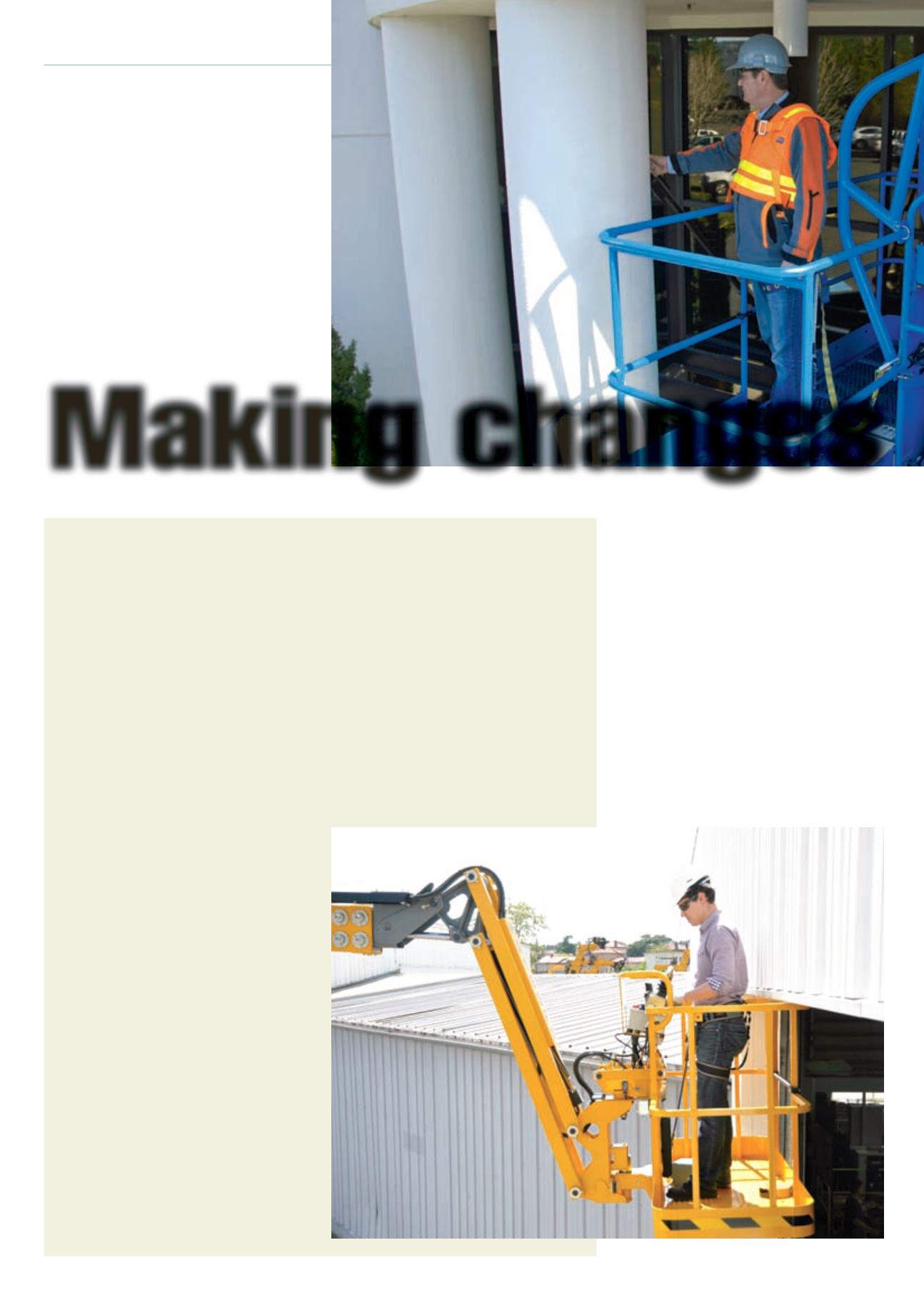
28
access
INTERNATIONAL
JANUARY-FEBRUARY 2014
OPERATOR PROTECTION
T
he International Powered Access
Federation’s (IPAF) voluntary accident
reporting programme is still in its
early stages, but reliable accident statistics
will inevitably improve awareness and lead to
better operator protection.
The latest figures, issued in January, reveal
there were 53 fatalities worldwide in 2013
involving aerial work platforms, according
A groundbreaking announcement in the UK has seen the term ‘anti-entrapment’ changed to ‘secondary
guarding’.
At the end of last year, the UK’s Strategic Forum for Construction Plant Safety Group’s (SFPSG) sub-group for
Mobile Elevating Work Platform (MEWP) Safety, unanimously agreed to change the terminology associated with
devices designed to reduce the risk of overhead crushing from ‘anti-entrapment’ to ‘secondary guarding.’
The SFPSG MEWP group is made up of experts from the industry including IPAF, the CPA, UKCG,
manufacturers and users and agreed the change at their second meeting held on 18 November 2013.
The agreement was based on a proposal prepared by the International Powered Access Federation’s (IPAF)
technical officer Chris Wraith which stated that, “all MEWPS are safe by design and are fitted as standard with a
function enable device which provides primary guarding system.
“Additional equipment or device(s), which can be fitted to a MEWP in order to reduce the risk of overhead
crushing injury, offer secondary protection and should not replace good practice by management and the
operator.
“Anti-entrapment devices do not prevent entrapment – they offer a secondary guarding option to assist
management in reducing the risk of serious injury from overhead hazards. Therefore the term ‘anti-entrapment’
is incorrect and the term ‘secondary guarding’ should be adopted by the industry,” the statement concluded.
Speaking to
AI
, Mr Wraith says the decision was, “Very significant”, adding, “Many devices are activated
once entrapment has taken place and so cannot
really be called anti-entrapment devices – they can
bring complacency to operators who think they have
an anti-entrapment device fitted, so they don’t have
to take as much care. IPAF hopes that everyone will
start to use the term secondary guarding to avoid
confusion.”
As Mr Wraith explains, convincing the industry
that the change was needed was not an easy task.
“When we first discussed this, a lot of people felt
anti-entrapment was the recognised terminology,
which meant everyone understood what we were
talking about, so we should just continue with what is
already accepted in the industry.
“IPAF’s response was; the terminology we have
in the industry is wrong and if we carry on with
something that is wrong, it is going to get more
wrong. But a constructive argument was put forward
by IPAF, showing the benefits and so the decision
was carried.”
It should be noted; the issue surrounding
secondary guarding is felt most strongly in the UK,
where it has become somewhat of an issue, and
where most of products related to it have been
introduced.
SECONDARY GUARDING
The powered access
industry is reporting
more accidents through
IPAF’s voluntary accident
database. The next logical
step is an improvement in
operator protection.
AI
reports
Making changes
Haulotte’s ACTIV’Shield system became
available in October last year. It operates
via a movable bar that will stop operation
when pushed forward by the operator, but
differs from other solutions in that the bar
can continue to move forwards after the stop
signal. Haulotte calls this additional feature
the Safety Gap.


